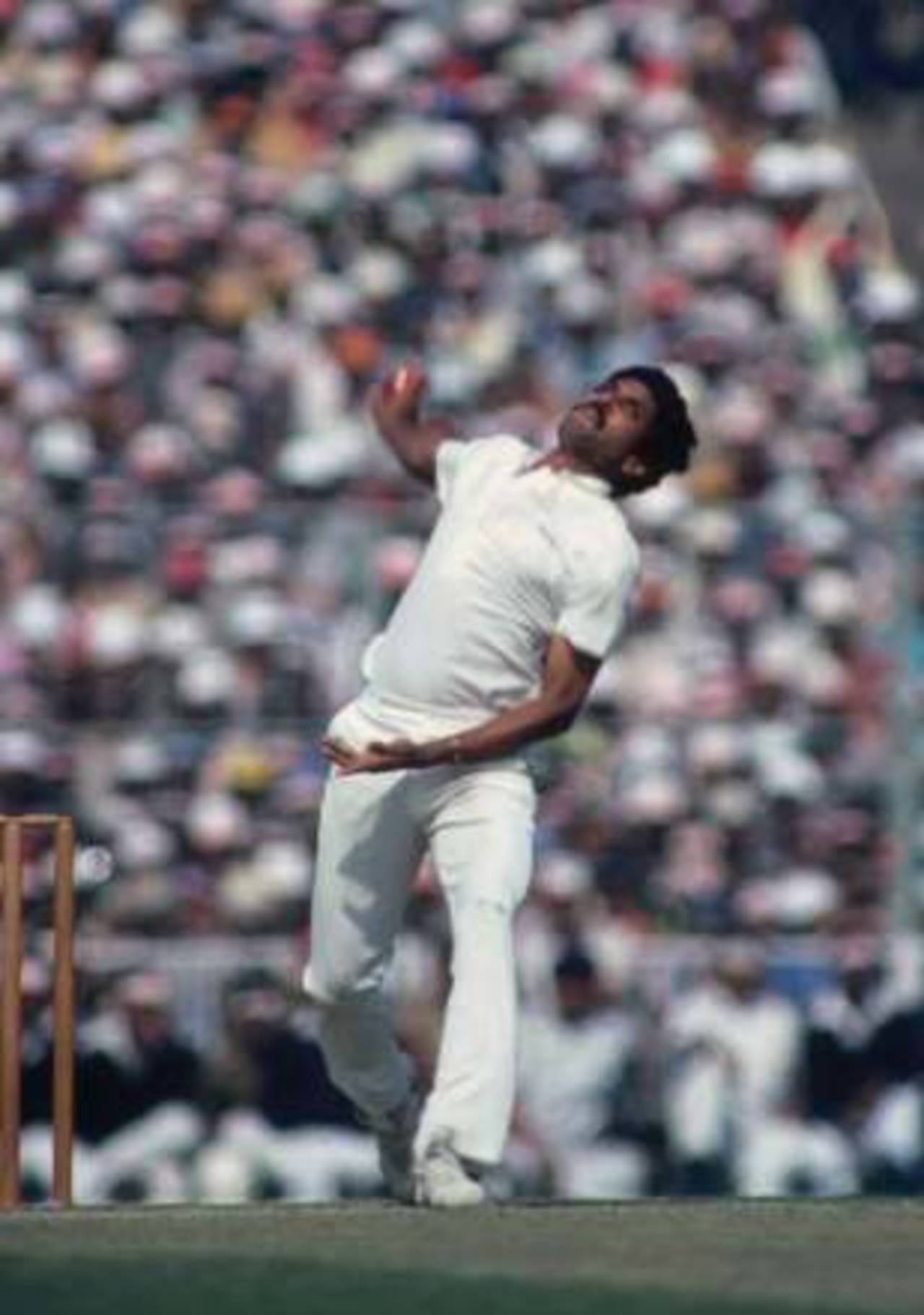Five fast men
Two from India's first Test, one from the era of spinners, a 90s stalwart, and a noughties hero make the quick bowlers shortlist

Kapil Dev: art and heart • Adrian Murrell/Getty Images
The candidates
 |
If Kapil Dev inspired a generation of fast-medium bowlers, it was Srinath who shepherded them through the highs and lows. Not having watched Nissar in action, it is difficult to be certain, but Srinath was probably the fastest bowler India has produced. His 236 wickets from 67 Tests came at a better strike rate on the less helpful home wickets.
 |
Held the world record, 434, for the most wickets, and in the years following the retirement of India's great spin bowlers carried the bowling attack on his broad and willing shoulders. Kapil's bowling was as much art as heart. He put both to good use for a decade and a half, with only occasional support from a brigade of lesser mortals who shared the new ball with him.
 |
Statistically second only to Kapil, with 242 wickets from 72 Tests, Zaheer discovered the joys of the yorker early, and continues to be the best of the pack of left-arm seamers who made their mark post-Srinath. Can take credit for a Test series win in England, where he was Man of the Series with 18 wickets in 2007.
 |
Headed the bowling averages on India's first tour of England, in 1932. According to CB Fry, Nissar was faster than Harold Larwood, who in six months' time was to run through Australia in the Bodyline series. A strike rate of 48, even if only over six Tests, hinted at what might have been had his pace and stamina been at India's service in later years.
 |
Had the most wickets on India's first tour, 111, and in Wisden's judgement was "the best bowler seen in England since the War." Walter Hammond was more poetic, saying Amar Singh "came off the pitch like the crack of doom". Singh's 51 was India's highest score in their inaugural Test. With better support from the field, India's most potent new-ball attack might have surprised England.
We'll be publishing an all-time India XI based on readers' votes to go with our jury's XI. To pick your fast bowlers click here
Suresh Menon is a writer based in Bangalore